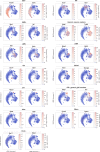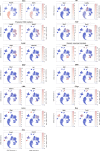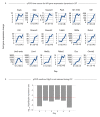Mouse embryonic stem cells can differentiate via multiple paths to the same state
- PMID: 28990928
- PMCID: PMC5648529
- DOI: 10.7554/eLife.26945
Mouse embryonic stem cells can differentiate via multiple paths to the same state
Abstract
In embryonic development, cells differentiate through stereotypical sequences of intermediate states to generate particular mature fates. By contrast, driving differentiation by ectopically expressing terminal transcription factors (direct programming) can generate similar fates by alternative routes. How differentiation in direct programming relates to embryonic differentiation is unclear. We applied single-cell RNA sequencing to compare two motor neuron differentiation protocols: a standard protocol approximating the embryonic lineage, and a direct programming method. Both initially undergo similar early neural commitment. Later, the direct programming path diverges into a novel transitional state rather than following the expected embryonic spinal intermediates. The novel state in direct programming has specific and uncharacteristic gene expression. It forms a loop in gene expression space that converges separately onto the same final motor neuron state as the standard path. Despite their different developmental histories, motor neurons from both protocols structurally, functionally, and transcriptionally resemble motor neurons isolated from embryos.
Keywords: developmental biology; differentiation trajectory; direct programming; embryonic development; motor neuron; mouse; single cell RNA-seq; stem cell differentiation; stem cells.
Conflict of interest statement
No competing interests declared.
is co founder of StemCellerant, LLC.
is co founder of 1CellBio, Inc.
is co founder of StemCellerant, LLC and 1CellBio, Inc.
Figures













References
Publication types
MeSH terms
Grants and funding
LinkOut - more resources
Full Text Sources
Other Literature Sources
Molecular Biology Databases

